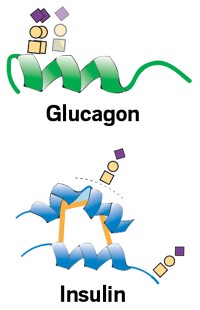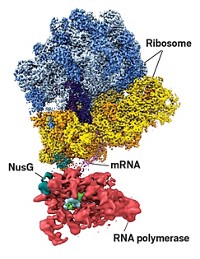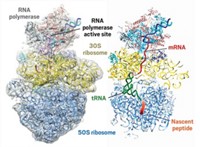Advertisement
Grab your lab coat. Let's get started
Welcome!
Welcome!
Create an account below to get 6 C&EN articles per month, receive newsletters and more - all free.
It seems this is your first time logging in online. Please enter the following information to continue.
As an ACS member you automatically get access to this site. All we need is few more details to create your reading experience.
Not you? Sign in with a different account.
Not you? Sign in with a different account.
ERROR 1
ERROR 1
ERROR 2
ERROR 2
ERROR 2
ERROR 2
ERROR 2
Password and Confirm password must match.
If you have an ACS member number, please enter it here so we can link this account to your membership. (optional)
ERROR 2
ACS values your privacy. By submitting your information, you are gaining access to C&EN and subscribing to our weekly newsletter. We use the information you provide to make your reading experience better, and we will never sell your data to third party members.
Biological Chemistry
Enzyme Has Most Complex Protein Knot Yet Seen
Surveys of knotted proteins reveal that ubiquitin hydrolase's protein chain passes over itself five times
by Stu Borman
September 27, 2006

Researchers have been making impressive progress lately in efforts to untangle the mysteries of knotted proteins. Three independent surveys have identified the same enzyme as having the most complex knot yet seen in proteins.
Physics professor Alexander Y. Grosberg and a coworker at the University of Minnesota, Minneapolis, recently made a quantitative study of the statistics of knots in proteins and found that the enzyme ubiquitin hydrolase possesses the most complex protein knot, with the protein chain passing over itself five times (PLoS Comput. Biol. 2006, 2, e45). Previously identified knotted proteins had at most four chain crossings.
Physics postdoc Peter Virnau and coworkers at Massachusetts Institute of Technology have now carried out an independent survey of knotted proteins in which they found the same extraordinary ubiquitin hydrolase conformation (PLoS Comput. Biol. 2006, 2, e122). And in a third independent study (not yet published), grad student Francesco Zonta, physics professor Enzo Orlandini, and coworkers at the University of Padova, Italy, also surveyed knots in proteins and repeated the ubiquitin hydrolase finding.
In the Virnau group's study, the researchers proposed biological functions for protein knots, such as protecting knotted proteins from degradation, and suggested a mechanism for how knotted proteins may have evolved. Grosberg says his group's survey revealed "about two orders of magnitude fewer knotted proteins than one should have expected for random conformations of polymers of the same size, flexibility, and compactness. Thus, for some reason, evolution avoids knots, although we don't know why it does so."





Join the conversation
Contact the reporter
Submit a Letter to the Editor for publication
Engage with us on Twitter